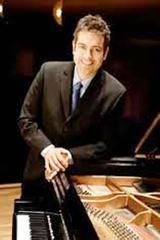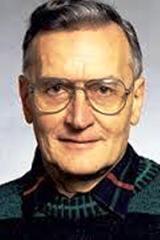|
Back
New York
Spectrum NYC, 121 Ludlow Street
12/14/2015 -
Aaron Cassidy: Ten monophonic miniatures for solo pianist
Michael Hersch: Milosz Fragments
Brian Ferneyhough: Lemma-Icon-Epigram
C. Curtis-Smith: Rhapsodies on James Joyce fragments
Jason Hardink (Piano)

J. Hardink (© Jasonhardink.com)
Three secrets were revealed last night in Spectrum. First, Spectrum itself, an upstairs room in an unnamed apartment building in downtown Manhattan, filled with books, deep armchairs, electronic equipment, a grand piano and some of the finest artists who perform music never heard anywhere else. Second secret was Curtis Curtis-Smith, who died a few years ago, and whose compositions could rival Carl Ruggles or Charles Ives, yet whose piano “invention” was a singular rarity. More about him later.
The third secret is Jason Hardink, a pianist of such extraordinary power–and memory–that he is difficult to forget. Mr. Hardink is not a secret in Utah, where he is Principal Keyboard with the Utah Symphony and Artistic Director of the NOVA Chamber Music Series. But his appearance in New York–at Spectrum, of course–was most welcome for those of us all too habituated to “usual” music.
His four composers are not household names, nor should they be. In fact, this music should be issued with a warning, “Do Not Attempt These Pieces At Home. They are Dangerous To Each Wrist And Every Finger.”
Not, though, to Mr. Hardink, who played all of these complex elaborate pieces without a score. His memory is obviously in sync with his digits.
Even his single digits. For the first work, Aaron Cassidy’s ten monophonic miniatures for solo piano were indeed works with neither harmony nor counterpoint. Yet each piece was performed with such energy, such a skipping, jumping, energy, that one’s visual sense pictured a child leaping up and down streets, bouncing and bounding.
Those gymnastics, though, were not from block to block but from the earth to the stratosphere and back again. Whatever Mr. Cassidy’s aim, he set up an innocent joy for the evening.
Mr. Cassidy’s piece was the only one not related to literary fragments or forms. Not that the following music ever had a Straussian literalness or picture of the words. In fact, Michael Hersch, a familiar name in New York, frequently writes music referring to external forms. His astonishing Vanishing Pavilions was based on the poetry of Christopher Middleton, his Lullabies dealt with the death of a friend, and here, he wrote ten short pieces based on fragments from the Nobel Prize-winning poet Czeslaw Milosz.
I personally knew Milosz for his staggering book of essays, The Captive Mind, about life under a totalitarian regime. Not Orwell-style fable or Koestler novel but the reality of what happens to the minds of men who attempt freedom yet are inevitably sucked into the horror of monomaniacal tyranny.
(Nor are we speaking of a Trump, who the ignorant facilely call “fascist”. He is an ugly amateur demagogue. Milosz knew the realities of political terror.)
Thus, Mr. Hersch’s fragments from Milosz’ poetry have a darkness caught by Mr. Hersch: ”A still-looking branch, both cold and living.”. Or ”From afar, from somewhere beyond the river, echoes of lingering voices.”
The music was not desolate but was slow; dissonant but not harsh; evocative but not literary. At times we could hear something almost familiar. A hint of a folk song at the start. The resonance of bells at the end.
Yet these were nuances, not reflections. Each section was complete in itself. And while they stood on their own, how wonderful (I thought) if the pianist before each piece, intoned the line which gave the inspiration to the composer. The artistry of poet and composer as one.
One composer better known for name than music in New York is the famed Brian Ferneyhough. Like his last name, his music is thorny, bristly, highly dissonant, seemingly wandering in a thousand directions at once.
Before the concert, I heard on YouTube (for the first time), Lemma-Icon-Epigram, 14 minutes of piano music which I could never quite grasp. Instead, what I loved, was the score on my screen, A complex skein with dynamics (often two or three dynamics and commands) for each of the trillions of notes.
When Jason Hardink played it last night, I realized what the YouTube performer was missing. In hitting all those notes with such perfection, that performer ignored the tough rhythmic changes which the composer specified. Mr. Hardink, though, was relentless in his playing–and halfway through, Mr. Ferneyhough began a syncopated section which varied, stopped, started again–but which gave the impression of Free Jazz.
I have no idea of Ferneyhough’s aims (save that this is supposedly based on a 16th Century poetic device), but the result was akin to an experience I had as a 14-year-old boy. Specifically, wandering into a Greenwich Village club and listening to Thelonious Monk improvising for himself. Ferneyhough’s music had no room for improvisation, but, with the exception of a short slow section, it was a music which moved–sorry, which was propelled into different dimensions.

C. Curtis-Smith (© wmich.edu)
The final piece was based on fragments from the “Sirens” section of James Joyce’s Ulysses. And the composer, Curtis Curtis-Smith, was an American phenomena.
Most of his life he taught in Kalamazoo, Michigan, well known to the citizens of that town (though less well-known than their great baseball hero, Derek Jeter). But did anybody actually know the music?
I had heard once his “American Symphony” a terrific agglomerate coming from Ruggles and Ives (with a heretical version of The Star-Spangled Banner which would have horrified the proper denizens of Kalamazoo)! But here, Curtis-Smith had a “fixed-up” piano far more interesting than the John Cage “prepared piano.”
That is, Mr. Hardink wove strands of fishing-line into the keys of the piano. And each of these lines had bows attached, so one could “play” the piano as if slowly hauling in a swordfish or wrestling with a whole school of very rancorous tuna!
The first fragment, ”...a swift pure cry...”, was played mainly on the piano, with a few plucks inside the piano. As each of the other three fragments were played, Mr. Hardink pulled at the bows, fingered the piano and created sounds ranging from a cello to an Aeolian harp, to a whole bass section of an orchestra, to huge choirs of sounds resonating and echoing through Spectrum’s room. (It ended with a beer–bottle inserted on a key, and that sadly eradicated the previous aura.)
So unusual was this that I wanted to turn away from the artist, who had now turned into a magician, and listen to the music itself. Still, Jason Hardink’s legerdemain was so enticing that I didn’t mind watching. For in this whole 75-minute recital, I never wanted to miss a single one of that superabundance of notes which he so dextrously controlled.
Harry Rolnick
|